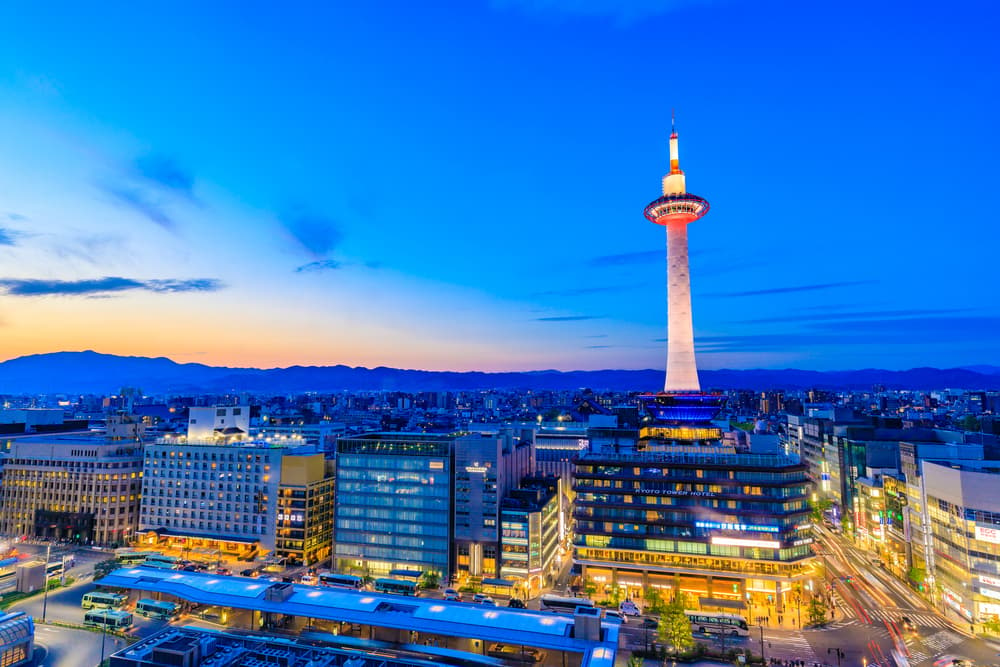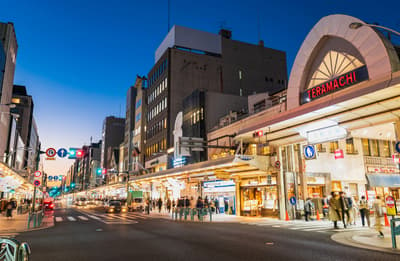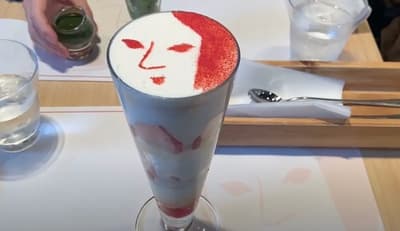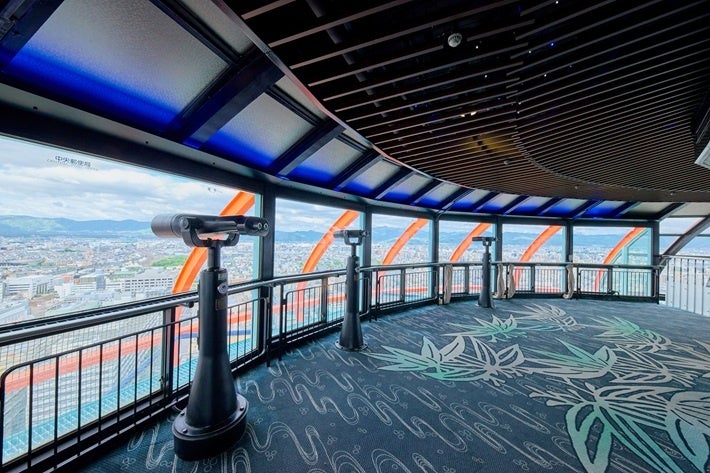Around Kyoto Station, the gateway to Kyoto, there are many popular tourist attractions that will satisfy the curiosity of both adults and children, including the landmark Nidec Kyoto Tower, famous temples such as To-ji Temple and Nishi-Hongan-ji Temple, Kyoto Aquarium, and Kyoto Railway Museum.
This area is especially recommended for those who want to do some quick sightseeing in the gap time before the bullet train on the way home, or for those who cannot do extensive activities on a one-day trip to Kyoto.
In this issue, we will introduce nine such spots around Kyoto Station.
Kyoto Station
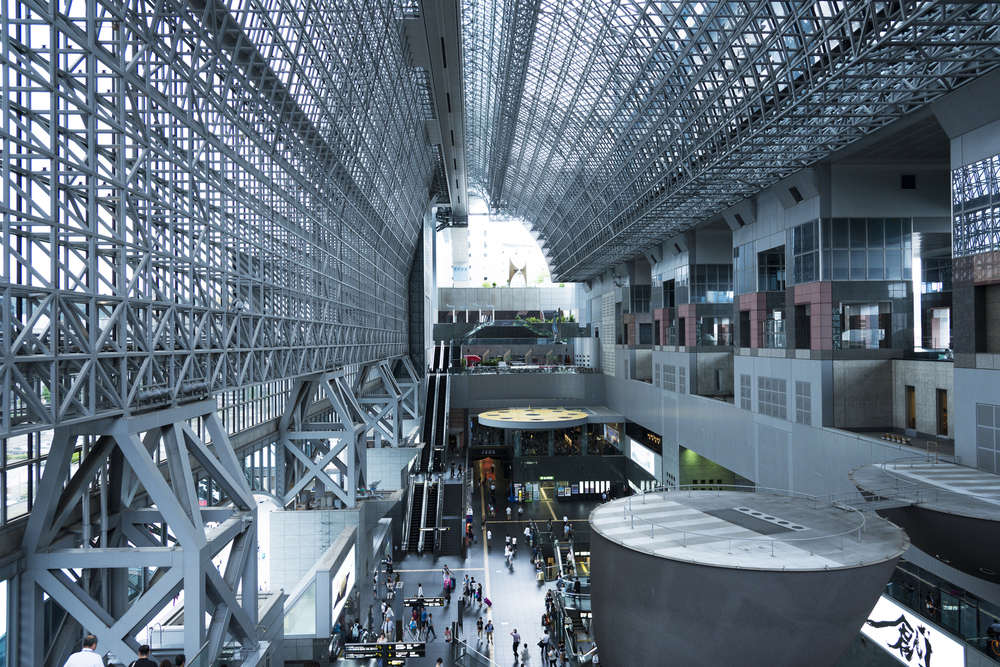
Kyoto Station, the gateway to Kyoto used by many tourists, is also a place with many attractions to enjoy. There is a promenade called “Aerial Route” at the top of the station building, “Ozora Hiroba” where you can relax after climbing the grand staircase in the building, “Kyoto Ramen Koji” where popular ramen stores from all over Japan are gathered, and if you are interested in Japanese bento (boxed meals made for eating on trains), there are several stores selling them in bulk. So head there.
If you are interested in Japanese sweets, go to the first basement floor of the department store “JR Kyoto Isetan” adjacent to the station. A variety of sweets, from Japanese to Western, are sold there.
Nidec Kyoto Tower(ニデック京都タワー)
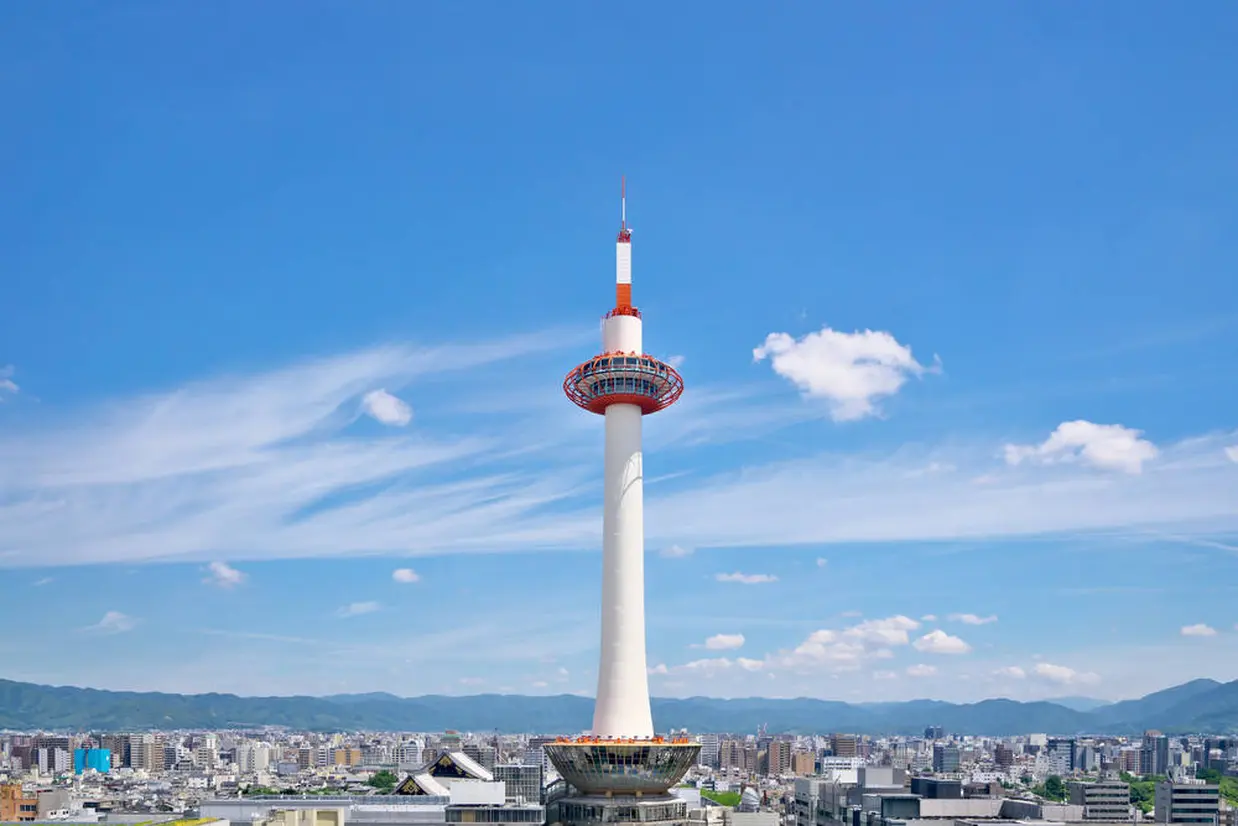
Kyoto Tower is a 131-meter observation tower built on the roof of the building in front of JR Kyoto Station. The tower’s graceful appearance was inspired by the image of a lighthouse illuminating the city of Kyoto. The observation deck is 100 meters above the ground and offers a panoramic view of the city of Kyoto, the surrounding shrines and temples, and the 36 peaks of Higashiyama. There is a hotel, restaurants, and a spot to purchase souvenirs.
There are also stores where you can try your hand at making Japanese sweets and learning how to make sushi, and we recommend experiencing Japanese culture here while visiting the station. For those who wish to explore Kyoto in kimono, renting a kimono at the kimono rental store in the tower is very convenient!
Kyoto Aquarium(京都水族館)
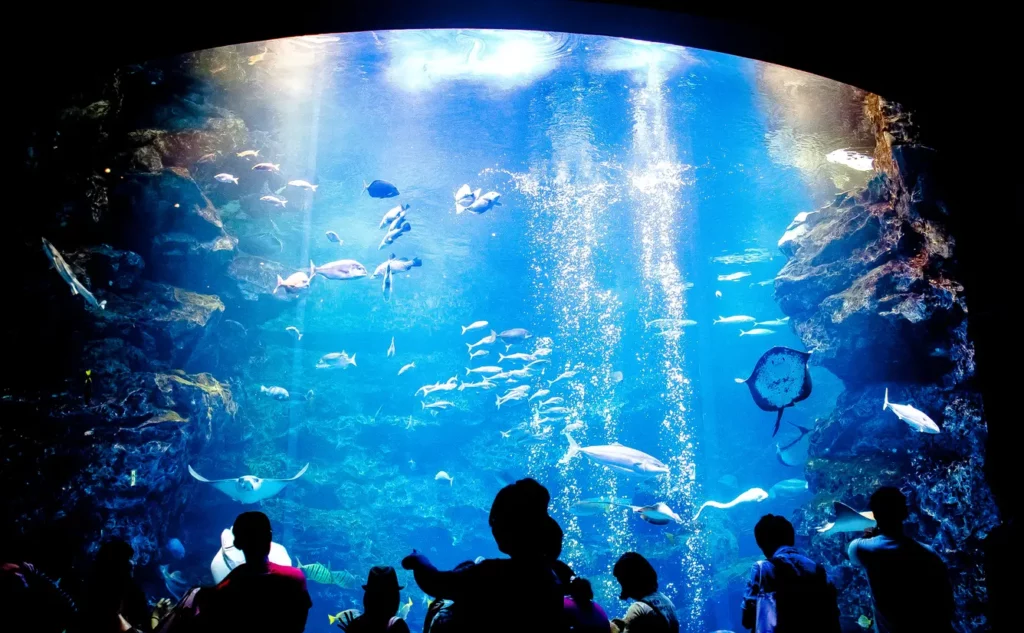
The Kyoto Aquarium is located about a 15-minute walk from Kyoto Station. Although there is no ocean nearby, it is one of the largest inland aquariums in Japan, where visitors can enjoy dolphin shows.
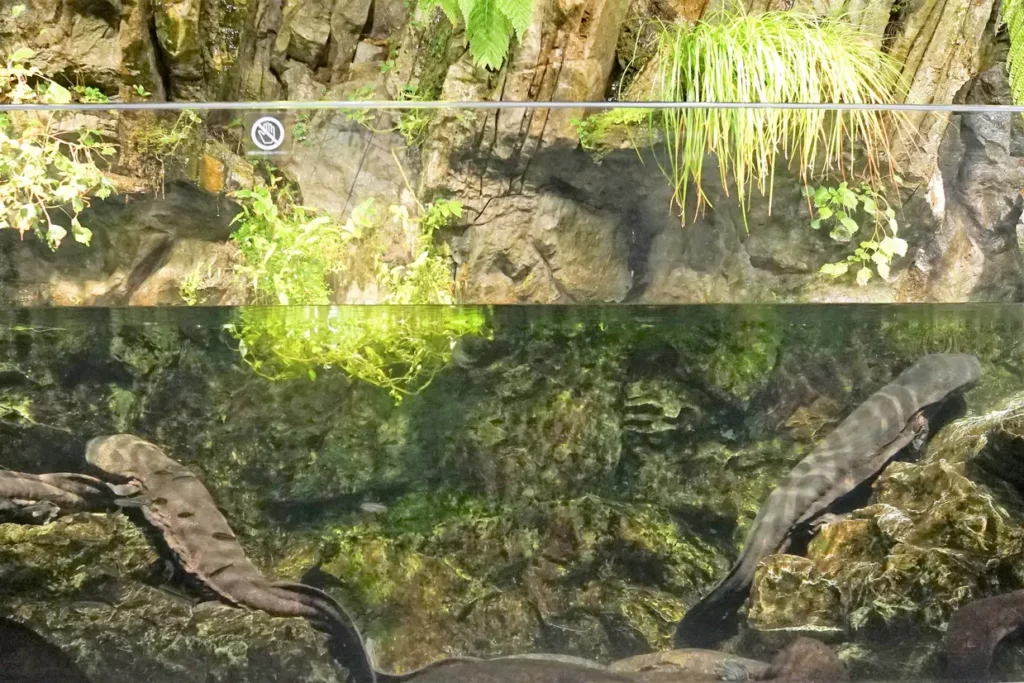
The centerpiece of the aquarium is the giant salamander, which has been designated a special natural treasure by the Japanese government. Visitors can observe the salamander, which is now considered a rarity, up close and personal.

Other highlights include the “Kyoto Sea” tank, which recreates the entire sea of Kyoto, home to a wide variety of creatures, and an exhibit of the aquarium’s popular penguins.
Kyoto Railway Museum(京都鉄道博物館)
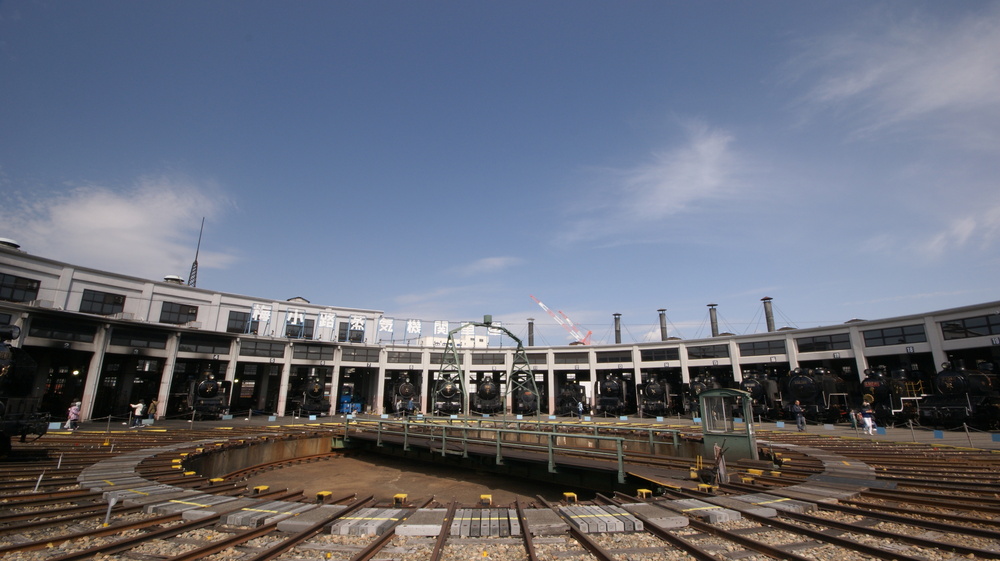
The Kyoto Railway Museum is recommended for those interested in Japanese trains! From steam locomotives to bullet trains, this facility is a must-see for railroad enthusiasts, with exhibits of valuable rolling stock, a driving simulator experience, and a steam locomotive garage.
Nishi Hongwanji Temple
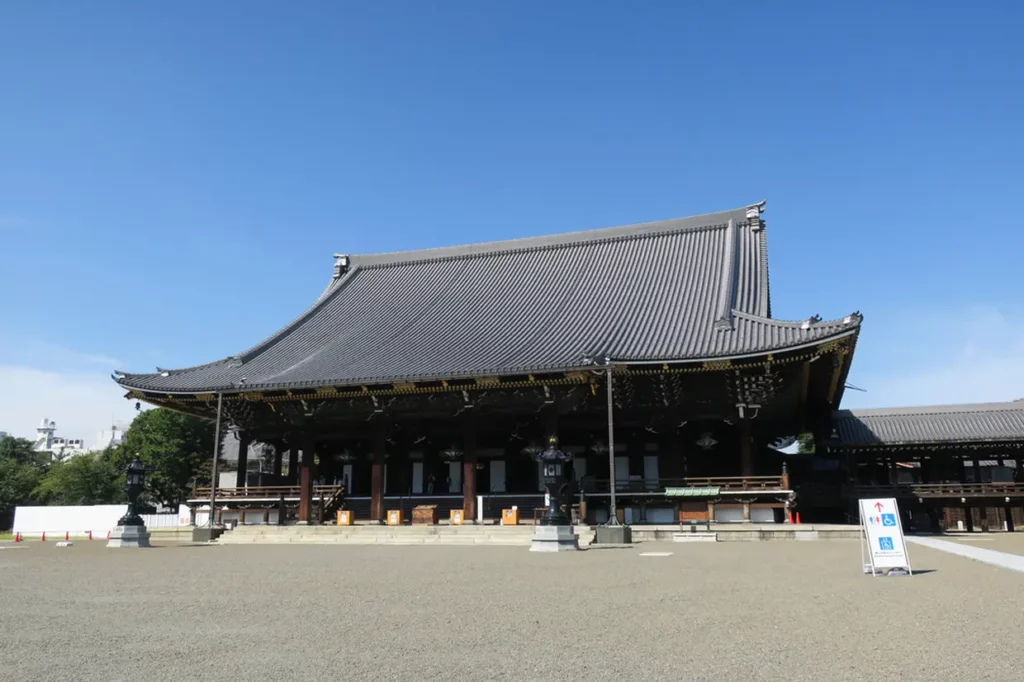
Nishi Honganji Temple, nicknamed “Onishi-san,” is a temple located near the Kyoto Aquarium and the Kyoto Railway Museum. There are many attractions including the precincts of the temple, which are registered as a World Heritage site, the Amida Hall (designated as a National Treasure), the Goeido Hall, the Karamon Gate, and the Hounkaku (Flying Cloud Pavilion).
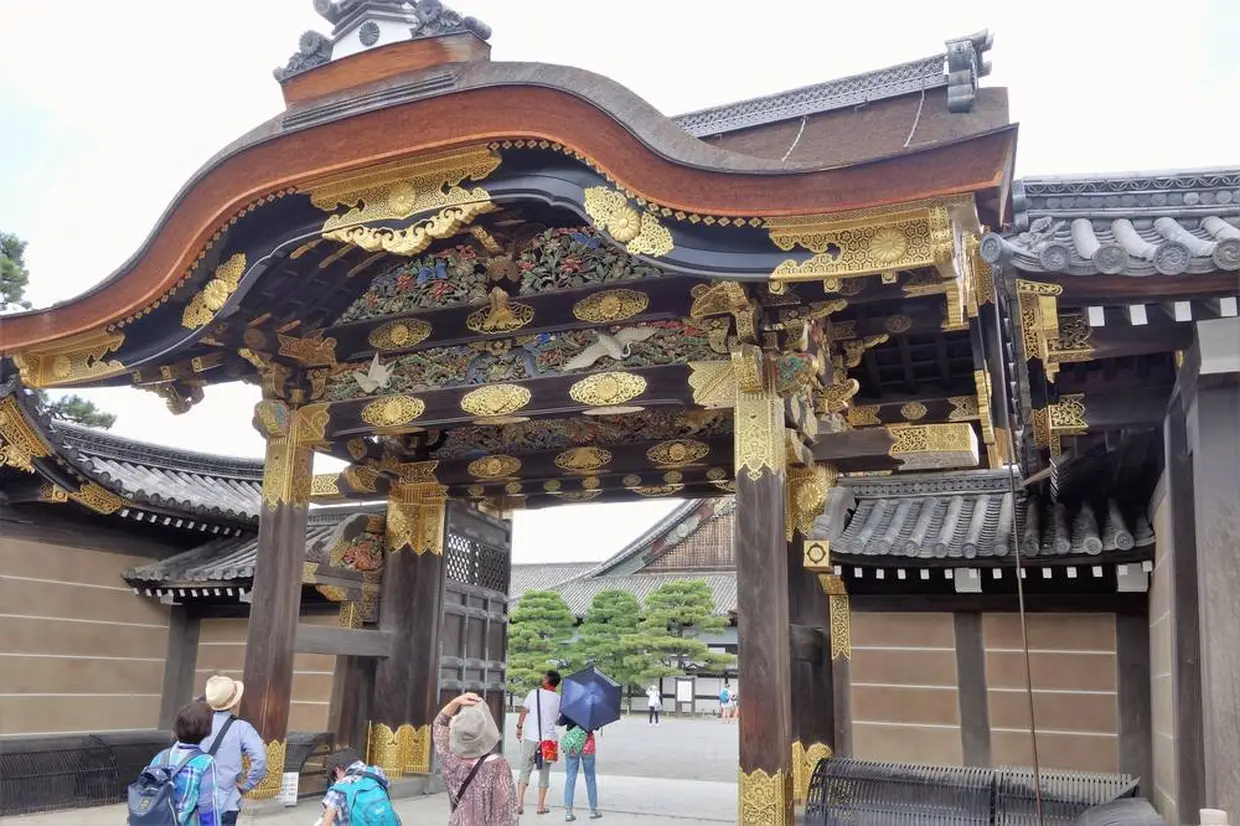
Nishi Hongwanji Temple tends to overwhelm visitors with its powerful building, but if you look at the details, you will find one of Mt. Fuji and animals in the corridor of the Amida Hall! Fuji and animals in the corridor of the Amida Hall. Other charming stone statues and Amanojaku (evil spirits) lurking in the precincts… Finding hidden cute points is also a recommended way to enjoy the temple.
Higashi Hongwanji Temple(東本願寺)
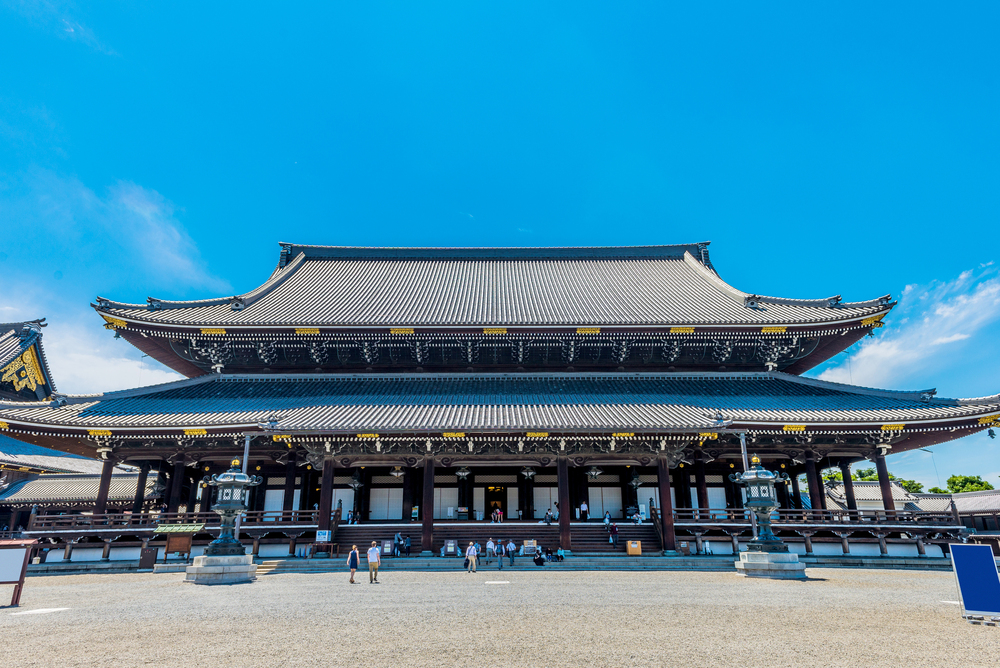
Higashi-honganji Temple, located not far from Nishi Honganji Temple, is one of the largest wooden buildings in the world, including the Goeido and the Goeidomon, as well as other buildings that are simply gigantic! You will definitely be overwhelmed.
The garden, located a short distance from the grounds where the building is located, is also a highlight, offering a beautiful view that varies from season to season.
museum of customs
If you are interested in the culture of old Japan, the Fuzoku Museum across from Nishi Honganji Temple, a 15-minute walk from Kyoto Station, is a facility where you can view a scale exhibit on the Heian Period, which lasted 400 years, over 1,000 years ago. Even if you do not know much about history, you can enjoy the detailed exhibits of daily life of aristocrats during the Heian period.
Toji Temple
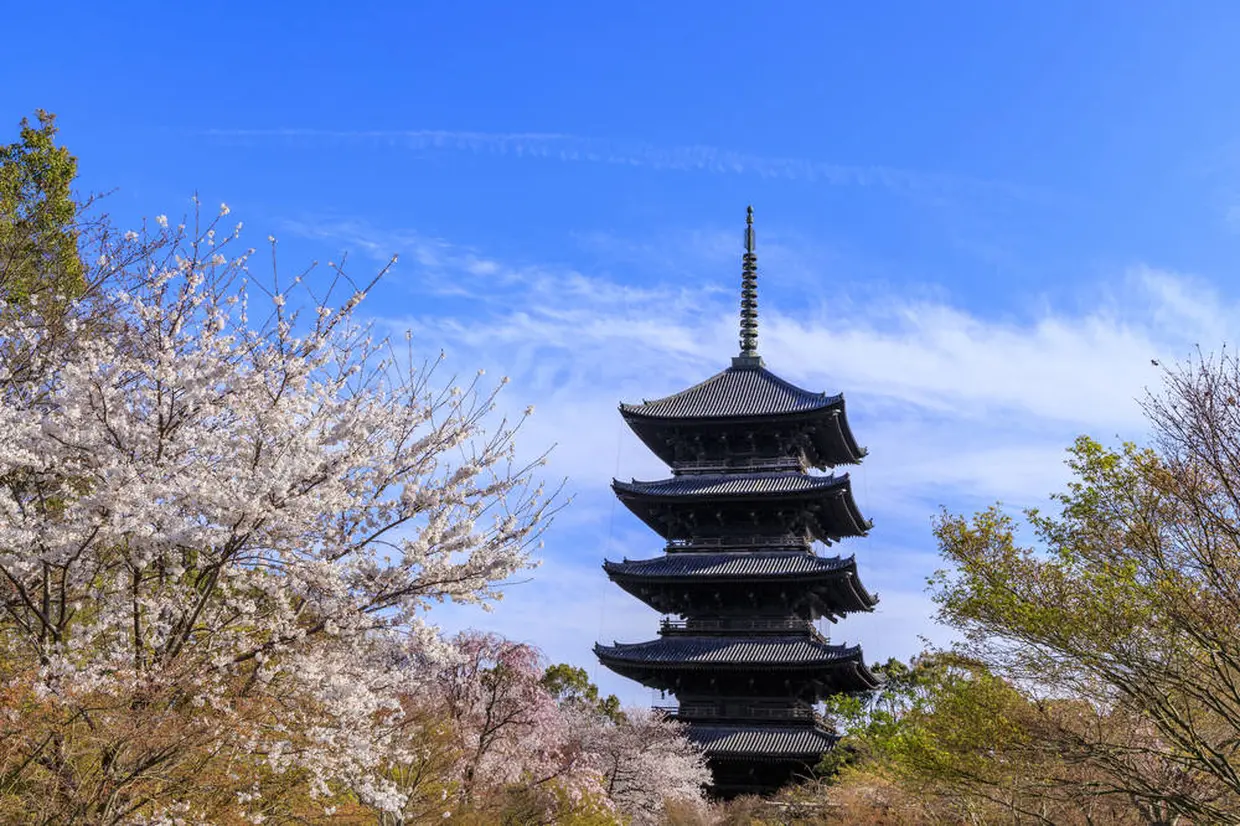
Toji Temple is located in a quiet area south of Kyoto Station, a short distance from downtown Kyoto. There are many national treasures and important cultural properties on the temple grounds, but the most famous is the five-story pagoda, which boasts a height of 54.8 meters. It is the tallest wooden structure in Japan.
The five-story pagoda is usually inaccessible inside, but there are special viewing periods several times a year. Although it is hard to imagine from the outside, the inside is colorful and majestic. It is a must-see if the timing is right.
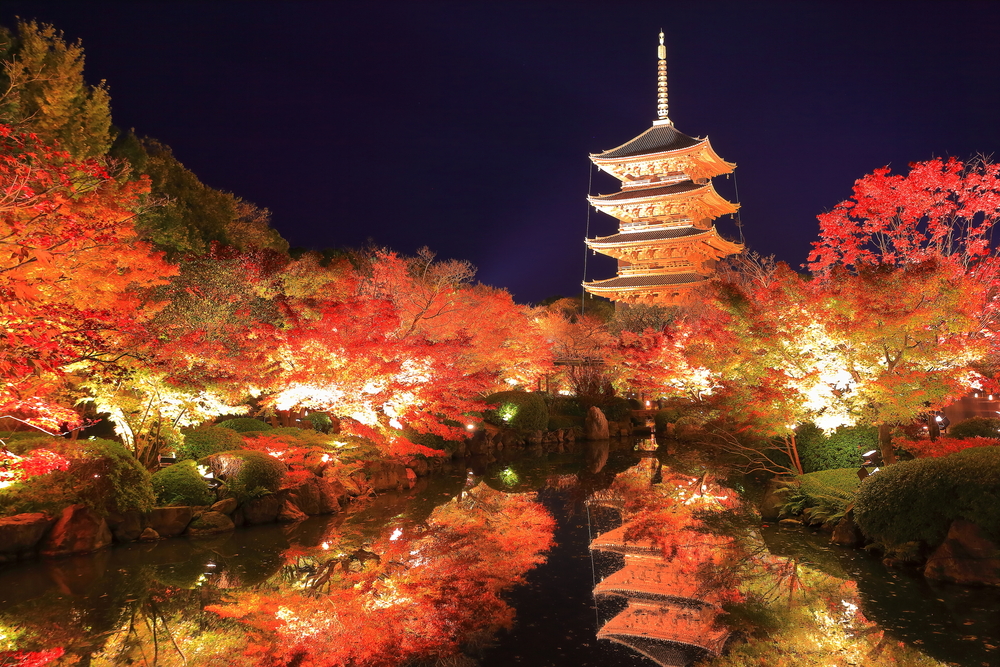
Toji Temple is also famous for its cherry blossoms and autumn leaves. During the season, the temple is also lit up at night, making it a popular photo spot.
Tofuku-ji Temple (東福寺)
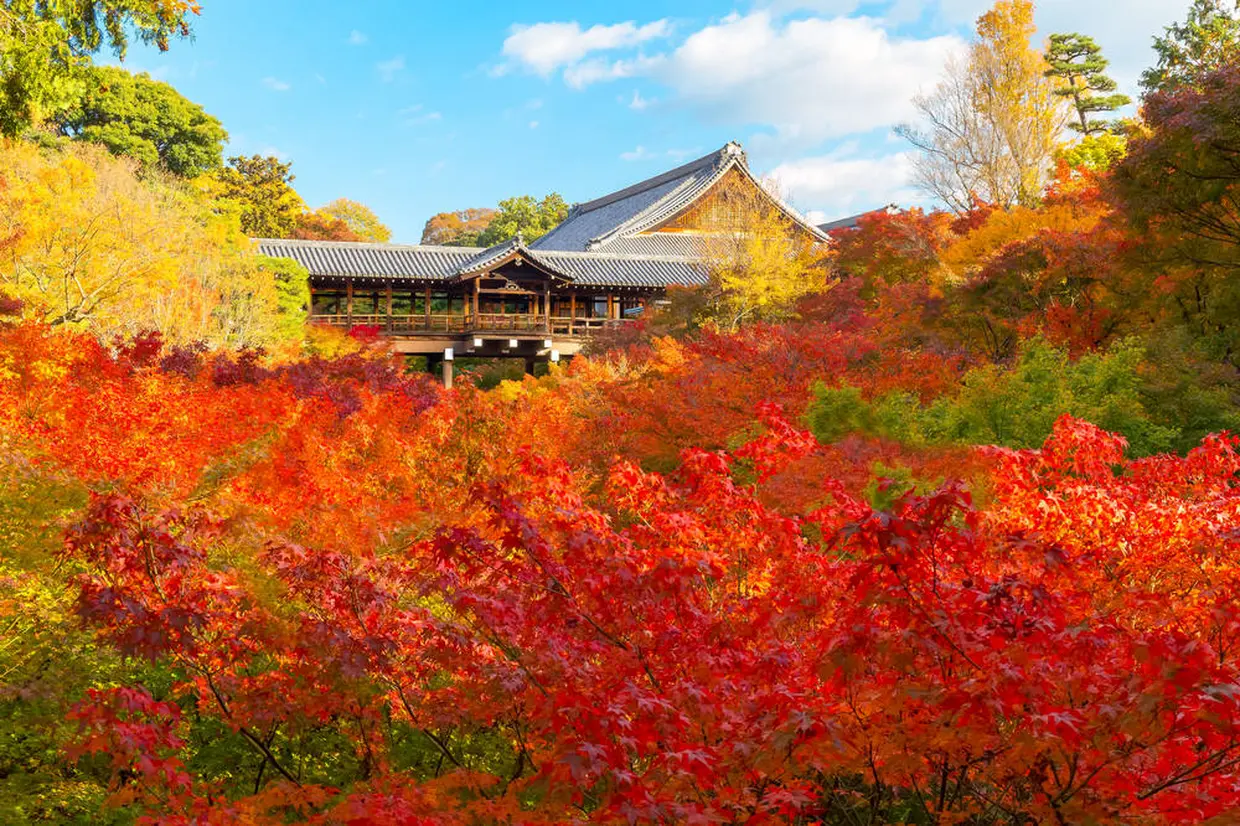
Tofuku-ji Temple is famous for its autumn foliage. Since the temple is located about a 20-minute walk from the popular sightseeing spot Fushimi Inari Taisha Shrine, many people visit the temple together. Another popular point is its easy accessibility, being only one train ride away from Kyoto Station.
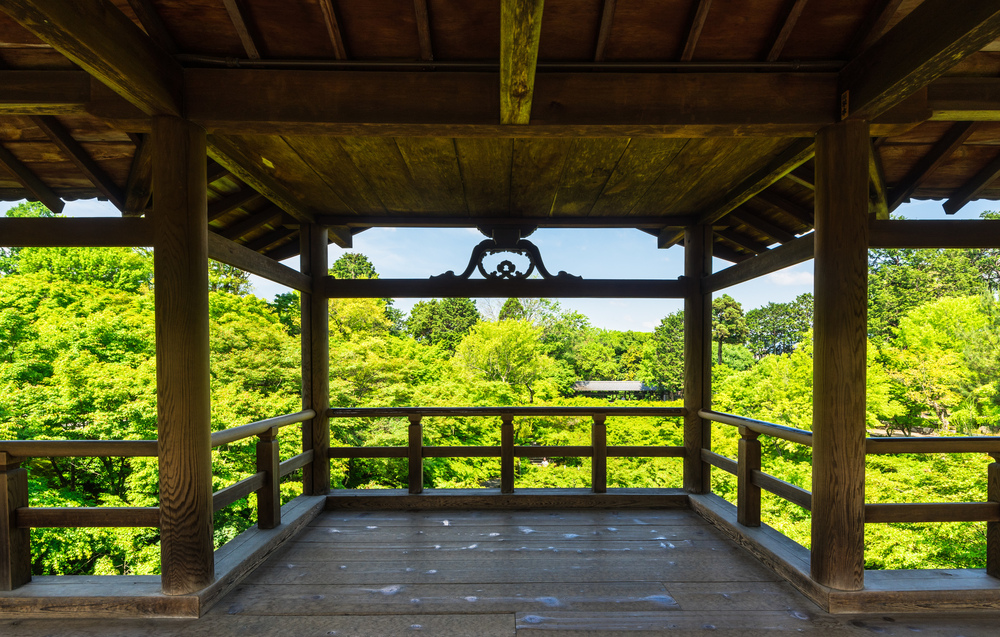
Kyoto is famous for its autumn foliage, but the leaves at Tofukuji Temple are exceptional. The view from Tsuten-kyo Bridge is like a bright red carpet. The view of green maple leaves in spring and summer is also excellent, so a visit in other seasons than autumn is also recommended.
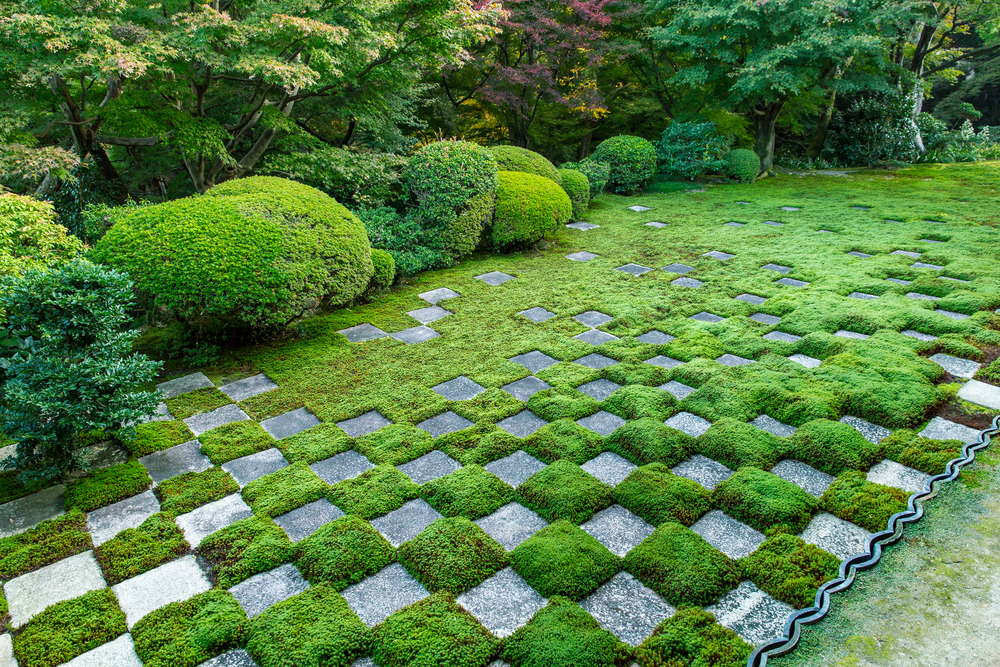
There are a number of other attractions within Tofuku-ji Temple. Especially recommended is the Honbo Garden, which is considered a masterpiece of modern garden design. There are four gardens on the east, west, north, south, and west sides of the building, each with its own unique character. The most popular garden is the “North Garden,” a checkered moss garden that was created in the 1980s and has been described as modern and artistic.
